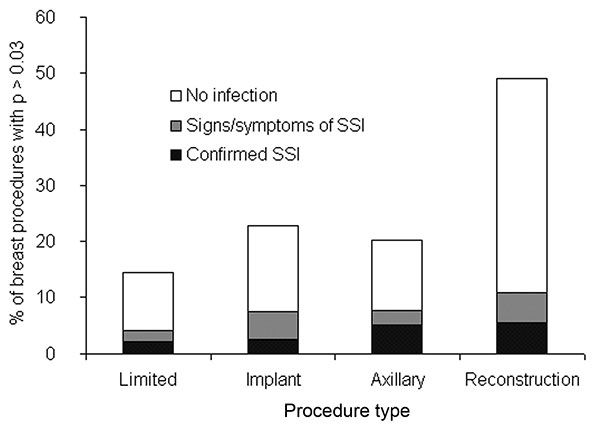Volume 10, Number 11—November 2004
Research
Enhanced Identification of Postoperative Infections among Outpatients
Figure 2

Figure 2. . Infectious outcomes among four categories of breast procedure. Each bar represents all procedures with predicted probability of infection >0.03. Shown are 60-day outcomes extrapolated from the rates among procedures with adequate records. p, predicted probability of infection; SSI, surgical site infection; limited, reduction mammoplasty, mastopexy without implant, and mastectomy without axillary dissection or reconstruction; implant, breast procedures with an implant; axillary, breast procedures with axillary dissection; reconstruction, breast procedures with reconstruction.
Page created: January 04, 2013
Page updated: January 04, 2013
Page reviewed: January 04, 2013
The conclusions, findings, and opinions expressed by authors contributing to this journal do not necessarily reflect the official position of the U.S. Department of Health and Human Services, the Public Health Service, the Centers for Disease Control and Prevention, or the authors' affiliated institutions. Use of trade names is for identification only and does not imply endorsement by any of the groups named above.